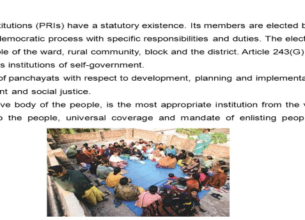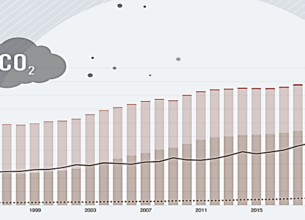GROWING BETTER: TEN CRITICAL TRANSITIONS TO TRANSFORM FOOD AND LAND USE
17, Sep 2019

Prelims level : Environment- Biodiversity, Climate Change, Ecosystem
Mains level : GS-III- Conservation, environmental pollution and Degradation, Environmental Impact Assessment.
Why in News?
- A new global study titled “Growing Better: Ten Critical Transitions to Transform Food and Land Use” has quantified the damage that the modern food industry does to human health, development and the environment costs.
- The “hidden cost” to the world is $12 trillion a year — equivalent to China’s GDP — says the study by the Food and Land Use Coalition (FOLU), a global alliance of economists and scientists.
Highlights of the Report:
- The current methods of food production, consumption and land use systems incur ‘hidden’ environmental, health and poverty costs estimated at almost $12 trillion a year.
- These hidden costs can cause irreversible damage to key ecosystems, fundamentally undermine food security in certain regions, and increase public health costs.
- The report warned that if action is not taken timely the costs will rise to more than $16 trillion a year by 2050.
- It will also put the United Nations-mandated Sustainable Development Goals (SDGs) and Paris Agreement climate targets out of reach.
- This can further unleash food scarcity, disrupt markets and cause political instability, particularly in poor countries, and greatly affect women and children.
- Food and land use systems are defined as the way “land is used, food is produced, stored, packed, processed, traded, distributed, marketed, consumed and disposed of,”
- These are the leading sources of greenhouse gas emissions (up to 30 per cent) driving climate change.
- They are responsible for the degradation of the world’s tropical forests, grasslands, wetlands and other remaining natural habitats. They are also the leading cause behind the ongoing ‘sixth extinction’ of biodiversity.
- Global farm subsidies — more than $1m per minute — are triggering climate crisis and destruction of wildlife, while just 1 per cent of the $700 billion a year given to farmers is used to benefit the environment, the analysis found.
- Much of the total is, instead, used to promote high-emission cattle production, forest destruction and pollution from overuse of fertilisers.
- The current food systems are also driving widespread malnutrition, besides directly impacting public health.
- Malnutrition leading to largest hidden cost: Today one-third of the world’s population is malnourished; by 2030 it is expected to rise up to 50 per cent. Since 2014, undernourishment has been rising and more than 820 million people are suffering from hunger.
- The most affected are in Asia and sub-Saharan Africa. Climate-related extreme weather, conflict and economic slowdown are responsible for undernourishment.
- The economic structure of the food system also perpetuates poverty and inequality. Of the 740 million people living in extreme poverty (with less than $1.90 a day purchasing power parity 2011) two-thirds are agricultural workers and their dependents. This indicates that the world is not on track to eradicate poverty by 2030 (SDG 1).
The report proposes a reform agenda — centred around 10 critical transitions — of real actionable solutions:
- Healthy diets
- Productive and regenerative agriculture
- A healthy and productive ocean
- Protecting and restoring nature
- Diversifying protein supply
- Reducing food loss and waste
- Local loops and linkages
- Harnessing the digital revolution
- Stronger rural livelihoods
- Gender and demography
- According to the report these could enable food and land use systems to provide food security and healthy diets for a global population of over nine billion by 2050, while also tackling core climate, biodiversity, health and poverty challenges.
What the Report Says About India?
- The report points out that India has 4 per cent of global freshwater resources to support 19 per cent of the world’s population. Some 80 per cent of water in India goes to agriculture, primarily from groundwater sources. This is unsustainable, it says.
- FOLU observes that existing government policies already address critical transitions that the new report recommends.
- Among various Indian initiatives, the report mentions the EatRight Movement of the Food Safety and Standards Authority of India in 2017, the National Food Security Act of 2013, the National Mission on Sustainable Agriculture, and the Zero Budget Natural Farming programme in Andhra Pradesh.








